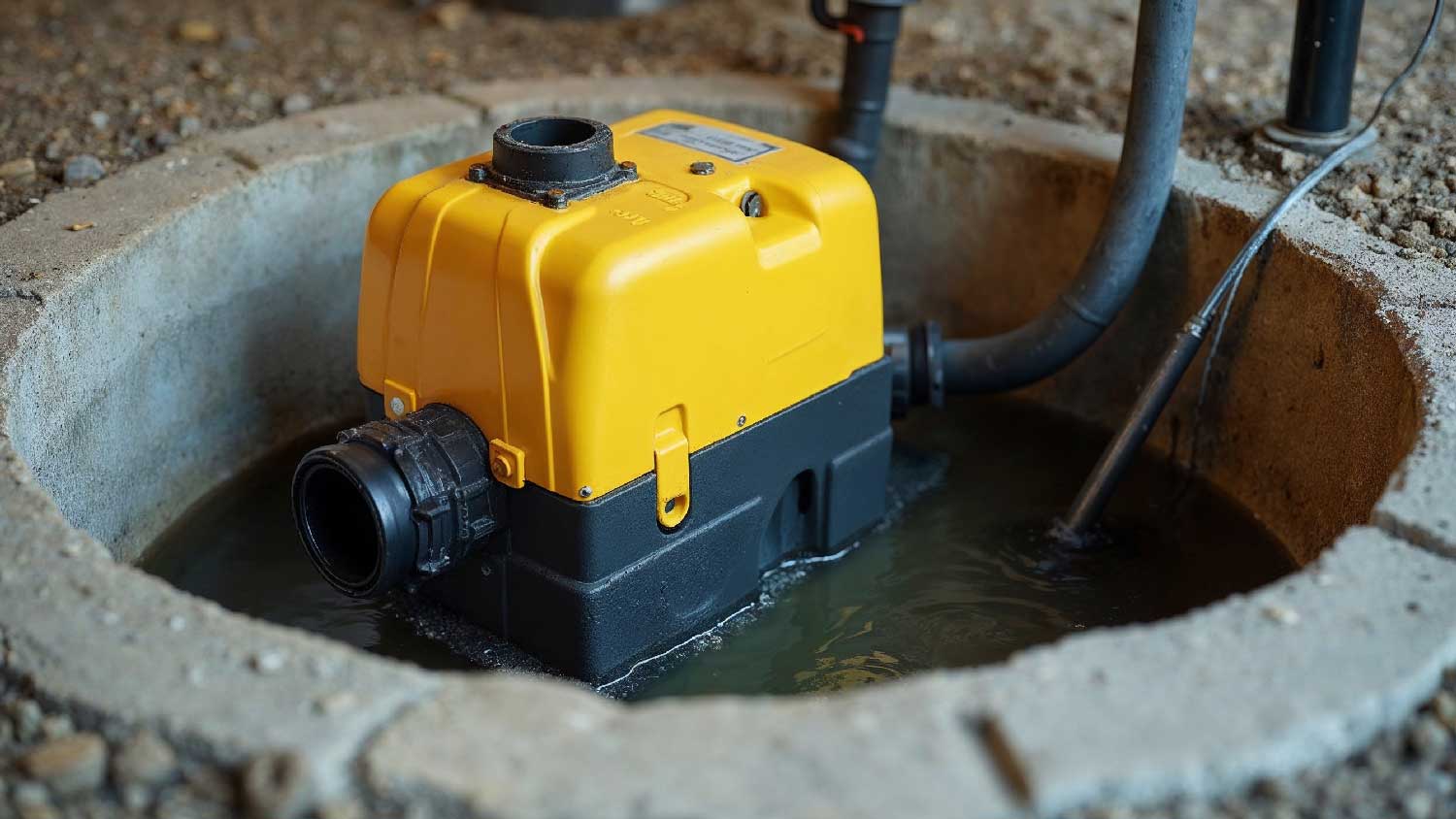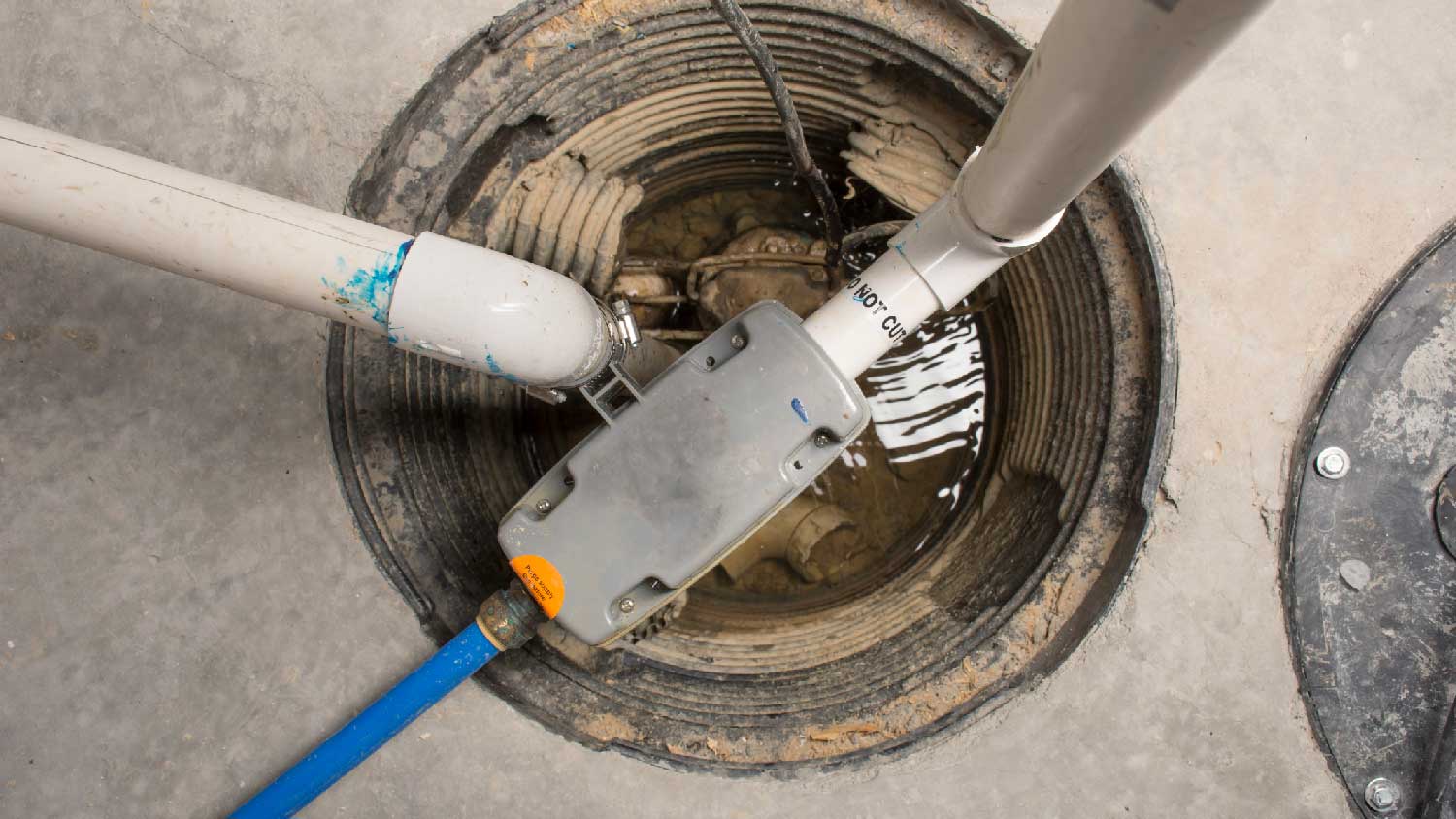
If you have a well, you might need to replace the well pump to have great-tasting water. Well pump replacement costs depend on your well size and other factors.
Don’t let your sump pump fall into a slump


It’s a fairly straightforward process to check whether your sump pump is running, but repairs or replacements are best left to the pros.
Professional sump pump repairs cost around $45 to $200 per hour and can be worth hiring a pro, because faulty repairs can cause water damage to your home.
Even small floods can add up to high costs, with the average price of water restoration falling at $3,850.
DIY repairs might void a sump pump warranty, so check the fine print before doing any work yourself.
You don’t have to step into a pool of murky water in the basement for there to be a serious problem with your sump pump. In fact, waiting until there’s flooding or mold growth to check the sump pump can lead to costly damage to your home’s foundation. Instead, learn how to check if your sump pump is working in a few easy steps so that you can call in pros for repairs before a bigger disaster strikes.
A sump pump is a device that pumps water from inside a home to the outside, and it’s common in homes in areas with flood risks, heavy rainfall, or poorly draining soil.
Excess rainwater or groundwater collects in a sump basin, often located in your basement or crawl space. The sump pump moves water from the basin inside the home to outside the home toward storm drains, natural water sources, or other drainage systems. When a sump pump stops working properly, you risk flooding your basement, so it’s important to check regularly if the sump pump is working.
Replacing a sump pump costs $310 to $750 on average, with the cost heavily depending on the type of sump pump you’re replacing. If your sump pump wore out prematurely because it was the wrong size for your home, you may want to consider upgrading your entire system. In that case, you can expect to spend $1,200 to $2,500 on the cost of installing a new sump pump.

Banished away to the basement or crawl space, the sump pump isn’t something that gets a lot of attention until it’s already malfunctioning. But you shouldn’t wait until there’s water pooling in the basement to realize something is wrong with your sump pump.
One common sign of a problem is when the sump pump is tripping the breaker, which may mean it’s not able to hold the amount of water coming into the basin or there’s a problem with the sump pump wiring. You may also notice the sump pump running constantly after heavy rain, which could be from a jammed float switch or clogs in the discharge pipe.
If the sump pump is malfunctioning, it may vibrate, make noises, pump constantly, or stop pumping altogether. If you notice these signs or haven’t checked on the sump pump in a while, take a few minutes to learn how to check if your sump pump is working to prevent a messy, costly flood.
There are several ways to check if your sump pump is working, including by unplugging the sump pump and plugging it back in, lifting the float inside the sump pump, or using a water test to see if the sump pump clears out the excess water.
Before you start unplugging the pump or pouring water over it, first check around the pump and its discharging pipes for any cracks, dents, clogs, or other damage that could be impacting its operation. While any damaged parts will need to be replaced by a pro, you can quickly clear out visible clogs by removing the debris by (gloved) hand.
A malfunctioning sump pump often means there’s a problem with the float or the motor. To check the motor, unplug the sump pump’s motor and float switch—there should be a plug for each part. Then, plug in the motor only. If you don’t notice the sound of the motor or see the pump turn back on, the motor is faulty, and a pro needs to replace the unit.
If the sump pump float switch isn’t working, it won’t be able to trigger the sump pump to turn on when the water level in the sump basin gets too high. To check if there’s a problem with the sump pump float switch, open the sump pump lid and look for the float. The float should look like a small black or white ball.
Lift the float up and watch or listen for just a few seconds for the sump pump to kick on. Don’t hold the float up too long because running a sump pump dry can wear out the motor. If the switch doesn’t cause the sump pump to kick on, the sump pump float switch is faulty and needs repair.
A sump pump is designed to pump out water from the house, so another great option to check if your sump pump is working is to put it to the test with real water. Fill a 5-gallon bucket with water, or use a container that can hold enough water to raise the float when poured over the sump pump.
Pour the water over the sump pump until the float switch rises. If the sump pump starts up and begins pumping out the water, it’s working properly. If it starts running but doesn’t pump any water or doesn’t run at all, you’ll need a pro to inspect the sump pump and determine whether it needs a repair or full replacement.

Maintaining a sump pump is one of the best ways to make sure this device is always working when you need it. Some steps you can take to keep your sump pump working for longer include:
Regular inspections: Check if the sump pump is working at least once per month.
Clean the sump pump: Clean the sump pump inlet screen and check for clogs around the discharge pipe at least once each season. Deep clean the unit once per year.
Install a filter: A sump pump filter can minimize clogs by keeping out large debris.
Test the sump pump power: Reset the sump pump to test its outlet at least once per year because sump pumps are vulnerable to power outages.
Check the pump position: Sump pumps can naturally shift over time because they vibrate when running. When testing the sump pump monthly, make sure the unit is upright.
Checking whether or not a sump pump is working is a DIY-friendly task that homeowners should become familiar with. It won’t cost any money to unplug the unit or pour water through it to test its efficiency.
However, if the sump pump turns out not to be working, that’s when it’s time to call in a pro. You can expect to spend $45 to $200 per hour to hire a pro for sump pump repair or replacement, and a replacement takes about one hour.
A local sump pump installer is your best bet for getting the sump pump running and ready to handle any extra rain the sky throws your way. If you attempt to DIY sump pump repair or replacement, you risk damaging the device and flooding your home.
From average costs to expert advice, get all the answers you need to get your job done.

If you have a well, you might need to replace the well pump to have great-tasting water. Well pump replacement costs depend on your well size and other factors.

Drilling a well is no small feat. You’ll need to plan for excavating, a pump, and more. This guide will help you estimate and manage your well drilling costs.

When your water system isn’t working as intended, it’s time to repair your well pump. This cost guide will break down well pump repair costs and the parts involved.

Is water constantly running into your sump pit? We’ll break down 5 possible problems with your sump pump—and how to fix them.

Sump pump discharge lines come in a couple of diameters and a range of lengths. Here’s how to determine the right sump pump pipe size for your installation.

Learn about the different types of water pumps for your home and their benefits. Find the best solutions for your water management needs.